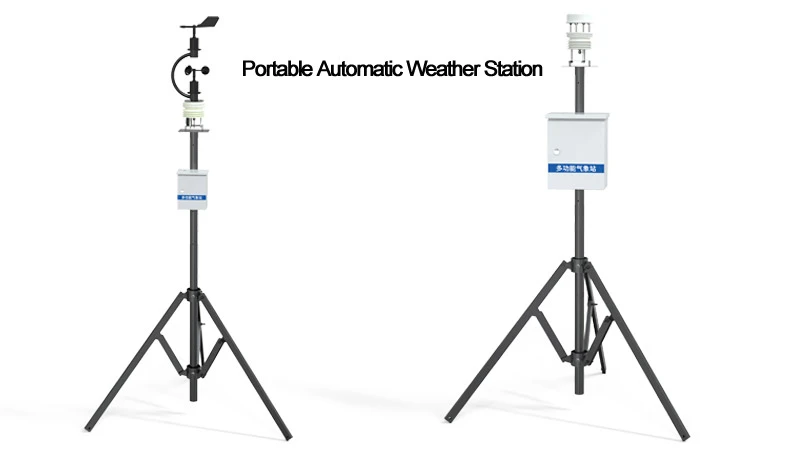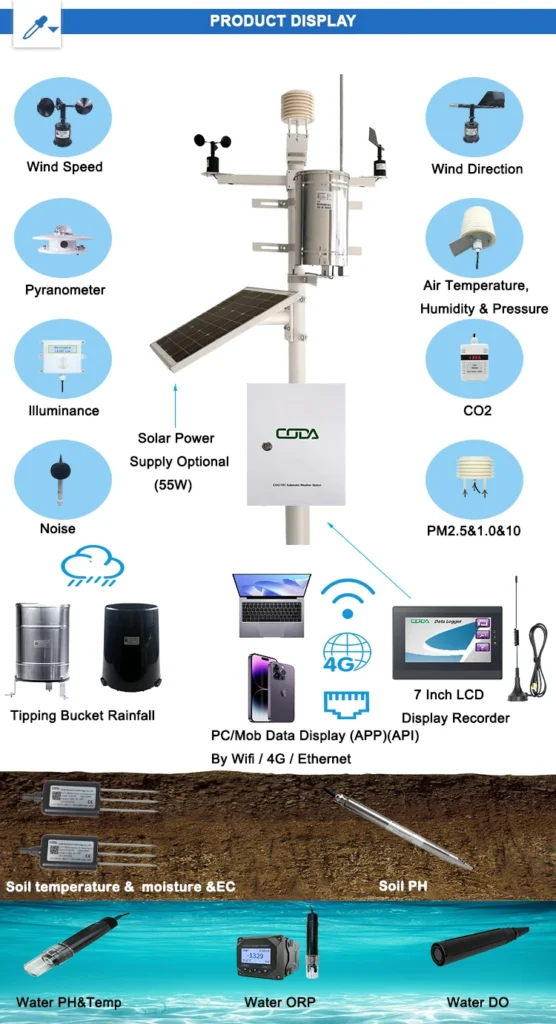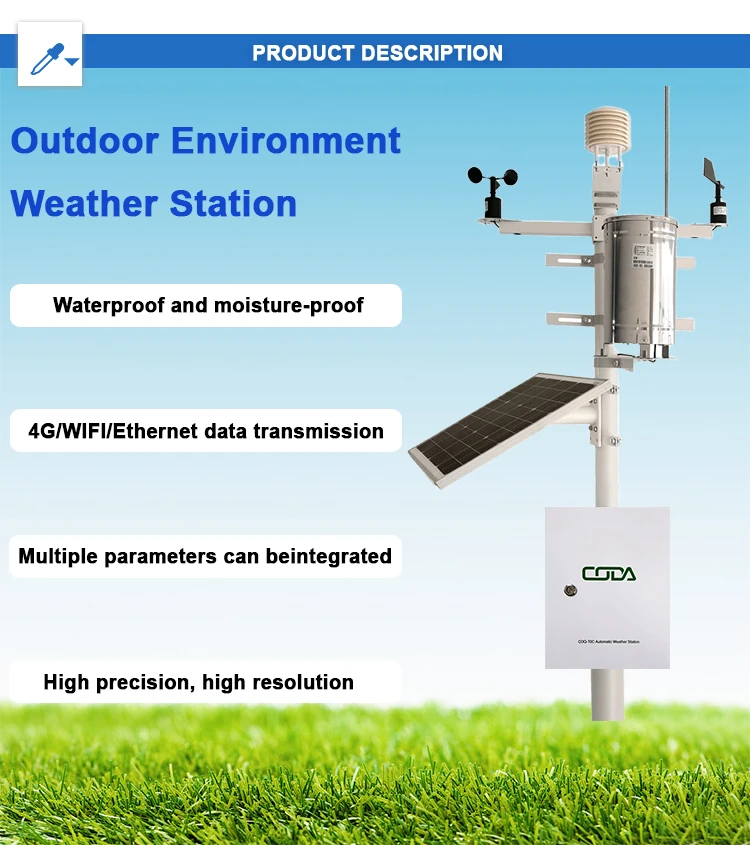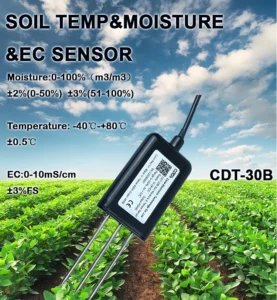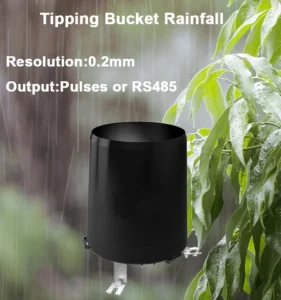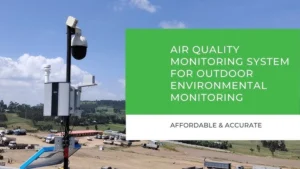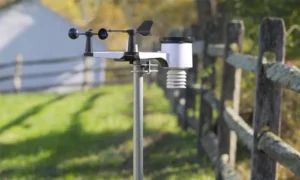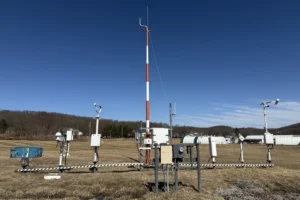Portable Meteorological Station: Revolutionizing Weather Monitoring
In today’s world, accurate and real-time weather information is important for many activities. The portable weather station is a useful tool. These small but strong stations let you check the weather anywhere. They provide data that used to come only from large, fixed installations.
What is a Portable Meteorological Station?
A portable weather station is a light and easy-to-carry device. It measures different weather conditions. Portable weather stations are not the same as traditional ones.
Traditional stations stay in one spot. You can move portable stations to different places as needed.
They have different sensors that work together. These sensors collect data on temperature, humidity, air pressure, and wind. They also measure wind speed, wind direction, and rain. Some advanced models can measure solar radiation and UV levels too.
Components and Working Principles
Sensors
The main part of a portable weather station includes its sensors. Temperature sensors measure the air temperature. They use thermistors or thermocouples to do this.
These sensors turn temperature changes into electrical signals. The system processes these signals and shows them as temperature readings.
Humidity sensors, which can be capacitive or resistive, detect changes in air moisture. When humidity levels change, the sensor’s electrical properties change too. This change shows up as a humidity percentage.
Meteorologists use barometric pressure sensors to measure air pressure. This helps them predict the weather.
These sensors can use different technologies, like MEMS (Micro-Electro-Mechanical Systems). They measure the force of the air above them. They change this force into an electrical signal that can be measured.
People use anemometers to measure wind speed. Cup anemometers are one of the most common types. They have cups attached to a pole. When the wind blows, the cups spin. The speed of the spin shows how fast the wind is blowing.
People use wind vanes to find out which way the wind is blowing. The wind pushes them to face it. Their position shows the wind’s direction.
Precipitation sensors, like tipping-bucket rain gauges, measure rainfall. When a small bucket fills with a set amount of rain, it tips over. This action sends a signal to the station’s data logger. The data logger then records the amount of rainfall.
Data Logger and Display
The sensors collect data and send it to a data logger. This device stores and processes the information.
The data logger can be a microcontroller or a separate device. It records data at set times. This helps us see weather trends over time.
Many portable stations have a display unit. This can be a simple LCD screen that shows the weather. Some stations have a touch-screen display. This lets users see past data, set alarms, and change the station’s settings.
Power Source
Portable weather stations need a power source to keep working. This can be a rechargeable battery, solar panels, or both.
Rechargeable batteries are easy to carry. You can charge them using a regular power outlet or a solar charger.
Solar panels provide clean and sustainable energy. They are very helpful in remote areas with little access to electricity.
Advantages of Portable Meteorological Stations
One of the biggest benefits of portable weather stations is that they are easy to move. You can use them in remote places, construction sites, outdoor events, or anywhere that needs weather checks. This makes them very helpful for disaster relief. Real-time weather data helps us see the situation and make better choices.
These stations are easy to set up. They have simple steps for installation and are friendly to users. Even those without technical skills can start using them quickly.
Their small size and light weight make them easy to carry and store. You do not need special tools or setups.
Portable weather stations are an affordable way to keep track of the weather. They cost less than big, fixed weather stations. Fixed stations need a lot of money to set up and maintain. You can use portable stations with current weather networks or as standalone devices for special needs.
Another benefit is their flexibility. You can change them to fit the needs of different users by adding or removing sensors.
A farmer might want to add a soil moisture sensor. This sensor checks how wet the soil is.
Researcher may also want to measure air quality. They might look at this along with standard weather variables.
Applications
In the field of agriculture, portable meteorological stations play a vital role. Farmers can use them to check the weather in their fields. This helps them decide about irrigation, planting, and harvesting.
Farmers can use data on temperature, humidity, and rainfall to manage water more effectively. This helps protect crops from bad weather and boosts yields.
For outdoor lovers like hikers, campers, and sailors, portable weather stations offer important information for safety. They can check the weather before starting a trip. They can also watch the weather while they are out. This helps them take the right steps, like avoiding bad weather or changing their plans.
In the construction industry, workers use portable weather stations to check job site conditions. High winds, heavy rain, and extreme temperatures can impact safety and progress. By watching these conditions, construction managers can choose when to stop work. This helps protect equipment and keeps workers safe.
They are also used a lot in scientific research. Researchers can use portable stations to collect weather data in remote areas. This helps them learn about local weather, climate change, and how people affect the environment.
Future Developments
As technology improves, portable weather stations will also get better. There is a trend to make things smaller. New sensors are now smaller and more powerful.
This will make the stations easier to carry. It will also improve their accuracy and features.
The use of wireless communication technologies, like Wi-Fi, Bluetooth, and cellular networks, is growing. This allows users to send data to smartphones, tablets, or cloud platforms in real time.
Users can check weather data anytime and from anywhere. They can watch and control the stations from far away. This helps to manage and keep them working.
Artificial intelligence and machine learning will likely be used more in portable weather stations. These tools can look at data. They can predict weather patterns and give better, personalized forecasts.
In conclusion, portable weather stations have changed how we track weather. Their mobility, ease of use, low cost, and versatility make them important tools for many purposes.
As technology keeps improving, these stations will become more advanced. They will provide valuable insights into the changing world of weather. No matter if you are a farmer, outdoor lover, construction worker, or scientist, a portable weather station can help. It keeps you informed and ready for any weather conditions.
